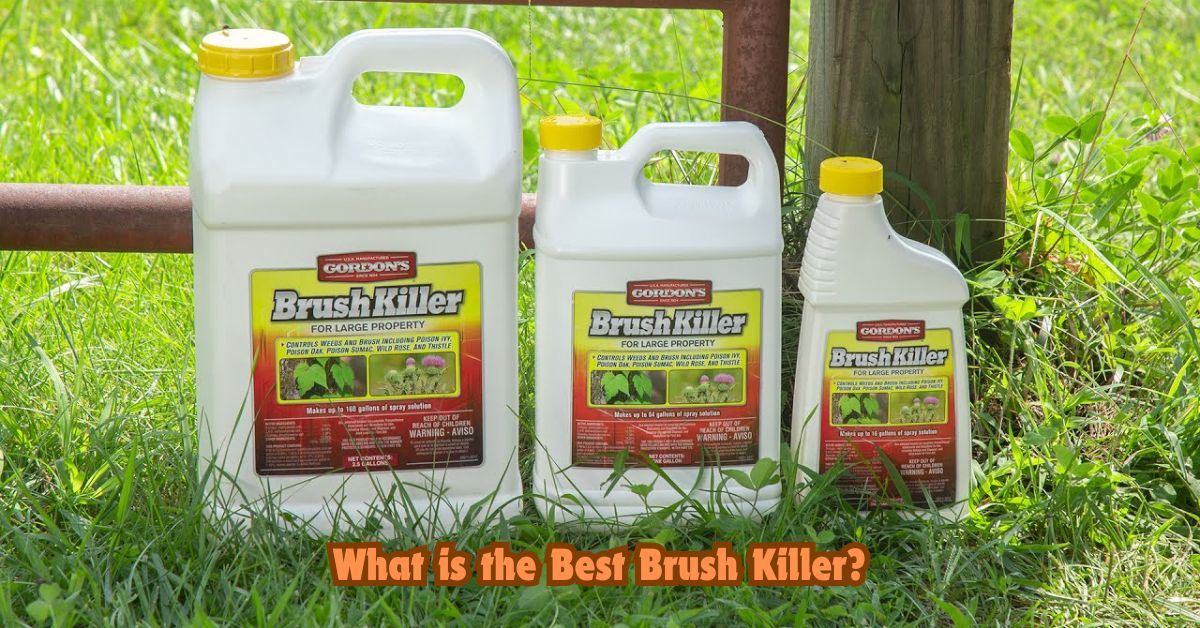Dealing with overgrown brush, weeds, and invasive plants can be a daunting task for homeowners and land managers alike. Choosing the best brush killer is essential for effective and efficient vegetation control. This article explores what makes an effective brush killer, highlights top products on the market, and provides tips for safe and proper use.
What Makes an Effective Brush Killer?
- Broad-Spectrum Effectiveness: The best brush killers should be able to handle a wide range of unwanted vegetation, including tough woody plants, vines, and broadleaf weeds.
- Systemic Action: Effective brush killers are usually systemic, meaning they are absorbed by the plant and travel throughout its tissues, killing it from the inside out. This ensures that the entire plant, including the roots, is eliminated.
- Residual Control: Products with residual control remain active in the soil for some time, preventing regrowth of treated areas.
- Ease of Application: The best brush killers are easy to mix and apply, whether you are using a sprayer, brush, or other application methods.
- Safety and Environmental Impact: An ideal brush killer should be safe for use around desirable plants and should have a minimal environmental impact when used as directed.
Top Brush Killer Products
- Roundup Poison Ivy Plus Tough Brush Killer
- Active Ingredients: Glyphosate and Triclopyr
- Features: Known for its ability to tackle tough brush and poison ivy. This product is systemic and works to kill the roots to prevent regrowth. It is easy to apply with a pump sprayer.
- Effectiveness: High; visible results in a few days.
- Crossbow Herbicide
- Active Ingredients: Triclopyr and 2,4-D
- Features: Effective against a wide range of woody plants and broadleaf weeds. It can be used in various settings, including pastures and non-crop areas.
- Effectiveness: Excellent; offers residual control to prevent regrowth.
- Ortho MAX Poison Ivy and Tough Brush Killer
- Active Ingredients: Triclopyr
- Features: Targets stubborn brush and ivy, with systemic action to ensure complete plant kill. It is suitable for spot treatments and is rainproof within two hours.
- Effectiveness: Very good; starts to show results within 24 hours.
- BioAdvanced Brush Killer Plus
- Active Ingredients: Triclopyr
- Features: Effective on over 70 types of brush and weeds. It is designed to penetrate the plant’s defenses and kill it to the root.
- Effectiveness: High; long-lasting results with a convenient ready-to-use formulation.
- RM43 43% Glyphosate Plus Weed Preventer
- Active Ingredients: Glyphosate and Imazapyr
- Features: Provides both immediate weed control and prevents regrowth for up to a year. Suitable for large areas like fence rows and gravel paths.
- Effectiveness: Excellent; offers long-term control and prevention.
Tips for Safe and Effective Use
- Read the Label: Always read and follow the manufacturer’s instructions and safety precautions. This ensures the product is used correctly and safely.
- Protective Gear: Wear appropriate protective gear, including gloves, long sleeves, pants, and eye protection, to avoid contact with the herbicide.
- Optimal Conditions: Apply brush killers in calm weather conditions to avoid drift and ensure the product stays on target. Avoid applying just before rain unless the product is rainproof.
- Target Specific Plants: Be cautious when applying near desirable plants. Use targeted applications to avoid damaging non-target vegetation.
- Proper Disposal: Dispose of any leftover product and empty containers according to local regulations to minimize environmental impact.
Conclusion
Selecting the best brush killer depends on your specific needs, the type of vegetation you are dealing with, and the area of application. Top products like Roundup Poison Ivy Plus Tough Brush Killer, Crossbow Herbicide, and Ortho MAX Poison Ivy and Tough Brush Killer offer reliable and effective solutions. By following safety guidelines and applying these products correctly, you can successfully manage and eliminate unwanted brush and weeds from your property.










